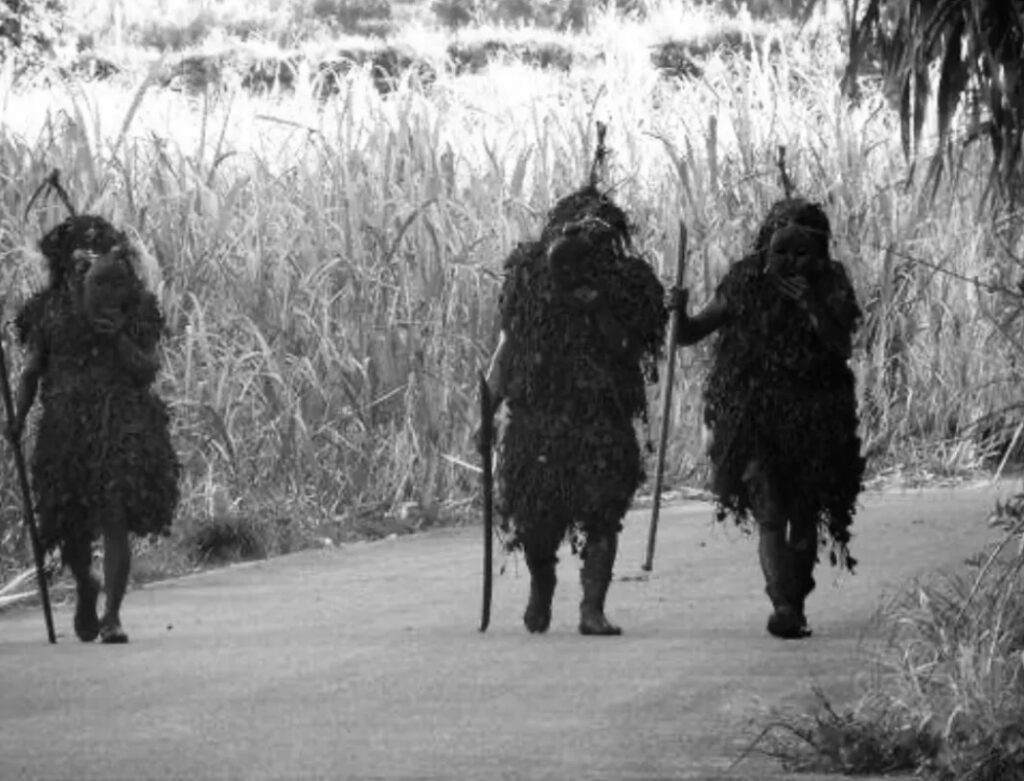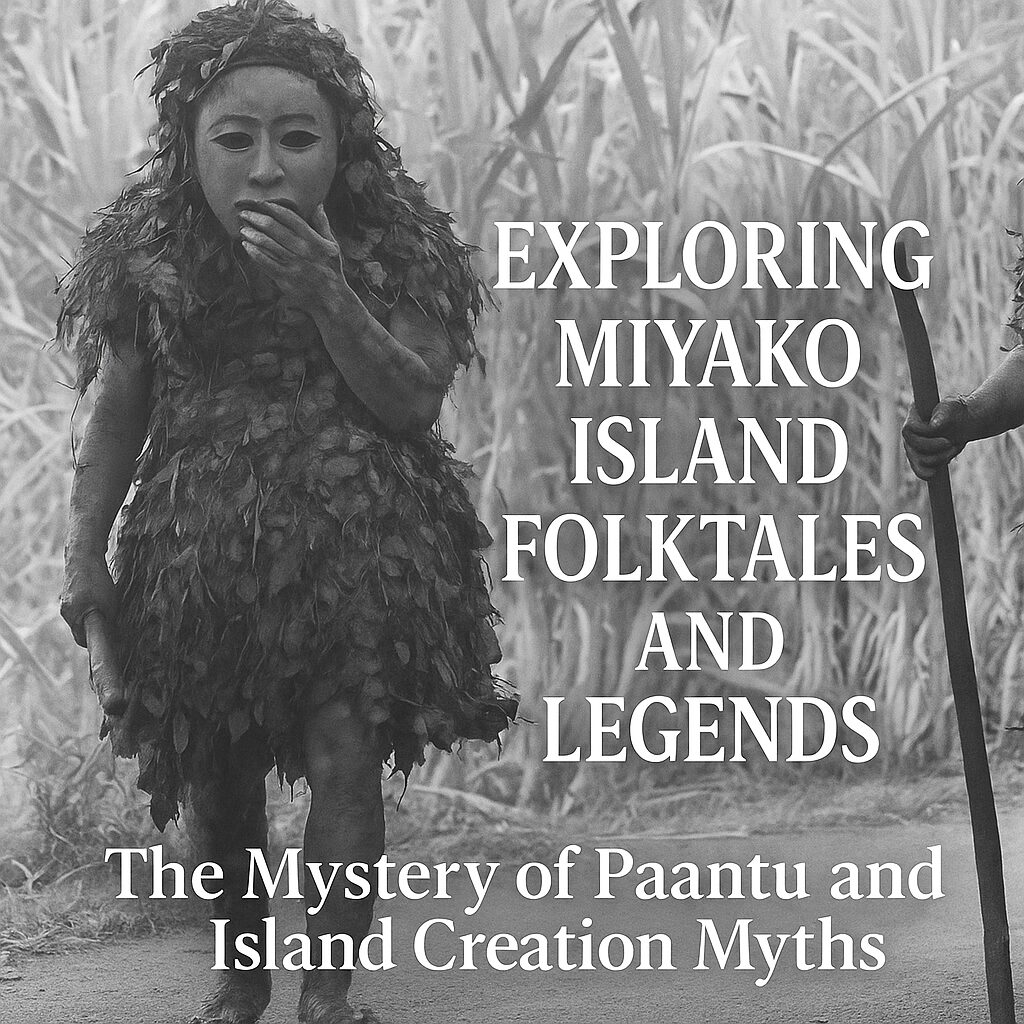Miyako Island is rich in unique culture and history, including the traditional purification ritual known as “Paantu” and myths related to the island’s creation. Let’s take a closer look at these traditions and stories.

The Legend of Paantu
Paantu is a traditional purification event held in Miyako Island since ancient times. Masked visiting gods roam the village, smearing mud to drive away evil spirits. This ritual takes place in two areas—Hirara Shimajiri and Ueno Nobaru—with differing practices.
- Paantu Satu Punaha of Hirara Shimajiri: Held on an auspicious day in the 9th lunar month, this ritual features three visiting deities—Parent Paantu, Middle Paantu, and Child Paantu. Covered in vines and smeared with mud from the bottom of a well, they parade through the village, applying mud to people and houses as a way of expelling evil. It is believed that those who are smeared with the mud are cleansed of bad spirits.
- Paantu of Ueno Nobaru: Conducted on the last Ox Day of the 12th lunar month, a boy wearing a Paantu mask leads a procession from a well, followed by other boys and adult women. They march through the village to purify it. Only adult women and boys participate—adult men and girls do not take part.
Paantu was inscribed on UNESCO’s Intangible Cultural Heritage list in 2018 and has since gained international attention for its uniqueness.
The Island’s Creation Myth
Miyako Island is home to myths about its creation. One of the most well-known is the story related to Harimizu Utaki. This sacred site is said to be where the creation of Miyako began, with male deity Koitsuno and female deity Koitama sent down by the Heavenly Emperor to cultivate the land and populate the island.
According to the myth, the Heavenly Emperor ordered Yakumi-no-Kami to create an island using a pillar of rock. When Yakumi-no-Kami threw the rock, it became Miyako Island. The emperor then assigned Koitsuno to protect the island and, at his request, also sent down Koitama. Together, they cultivated the land, bore children, and laid the foundation of Miyako.
Several hundred years later, a young woman living in Hirara was visited nightly by a handsome young man and became pregnant. Her family investigated and found that he was the incarnation of a white serpent residing in Harimizu Utaki. This serpent was believed to be the transformed Koitsuno. The three children born from their union later became the guardian deities of Miyako Island.
Conclusion
Miyako Island’s folktales and legends deeply reflect the island’s culture and spirituality. The Paantu ritual and the creation myths of Harimizu Utaki play vital roles in understanding the beliefs and way of life of the island’s people. Through these stories, one can experience the rich cultural and historical heritage of Miyako Island.

